Building Venice, the floating city
Venice is a city built on man-made islands. The process of building Venice is a living proof of human ingenious, will and wealth.
Back in the 7th century when barbaric were invading Italy and surrounding countries, the farmers, who couldn’t defend themselves from warriors moved over to nearby islands. The waters in this area were shallow, so ships could not come through without knowledge of the underwater islands. So these islands presented the perfect for farmers. After three such invasions, the farmers decided to settle here. But, to settle here, they need to create land that wasn’t constantly getting submerged with the tides.
On our free walking tour, we learned all about the history and current affairs of Venice. The solution was a stroke of genius, yet seemingly so simple. To build each little island, they started with a mound of land where the sea was shallow. They surrounded it with a retaining wall of bricks and mortar. The following picture shows a perfect example of the retaining wall along the canal.
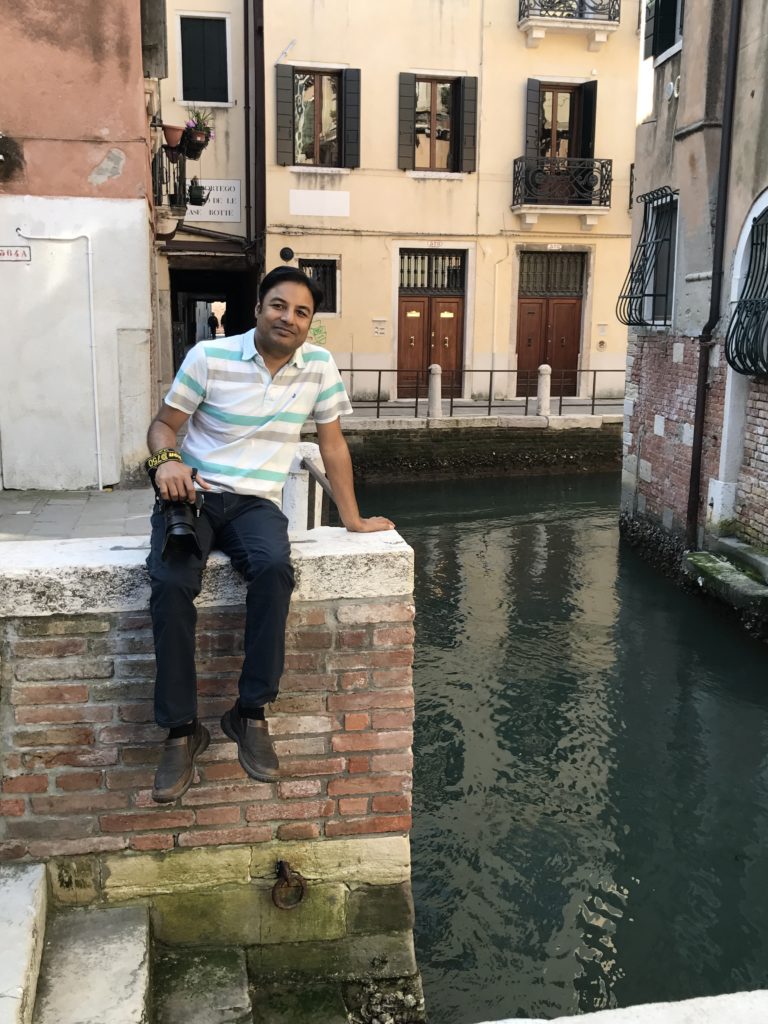
Building Venice on Shallow Seas
After the wall was built, they needed to make the swampy land sturdy enough for building a house. So, they brought tree trunks from the mainland and stuck them vertically into the contained swampy land. The sheer volume of the wood compacted all the sand in place within the island walls. Then horizontal tree trunks were laid criss-cross along the top to provide a strong foundation that has lasted for centuries. To build houses, Istrian stone was laid on the wood. The store is waterproof and sealed in the wooden foundation. The sealed-in wood was petrified with the salt to create a hard stone like a foundation that’s virtually indestructible.
Over the following 9 centuries, Venice continued to be built. By the 15th century, the city looked more or less like it does today. ‘Stones of Venice’ is a famous book about how Venice and how it was built.
In the 15th century, Venice was a collection of 118 islands. When Napoleon came, he had some of the canals filled and covered to roads, so now there are said to be 98 islands.
Each island was initially field for farming and each island had a church. Like this San Vio church in the campo below –
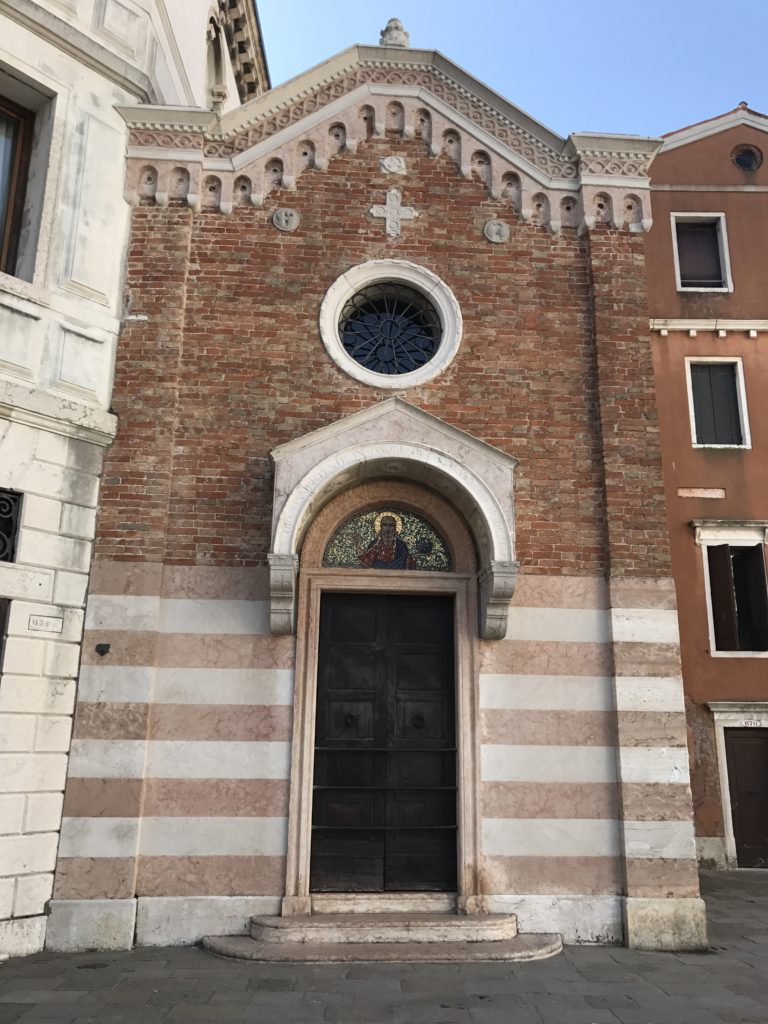
This is called Campo S Vio. Campo stands for the field (for farming) and bears the name of the church, in this case, Saint Vio.
There is a church in every field. The best way to find a place in Venice is to look for the church’s name because street names repeat all over the city.
San Vio church was the first church in this field. Now it’s a private residence and a new Angelica’s church stands next door.
Drinking water
In each campo is a well that supplies drinking water for the resident. Well, it’s not really a well because this field is sitting on salty sea water. But, it is a water storage facility.
A few feet from the storage well are holes that collect rainwater. The water then filters through layers of sand, so absolutely pure drinking water reaches the well. The wells were always covered and locked at night for the fear of enemies poisoning the only source of water. Now they are no longer in use because drinking water is brought in from the mainland in large pipes along the bridge.
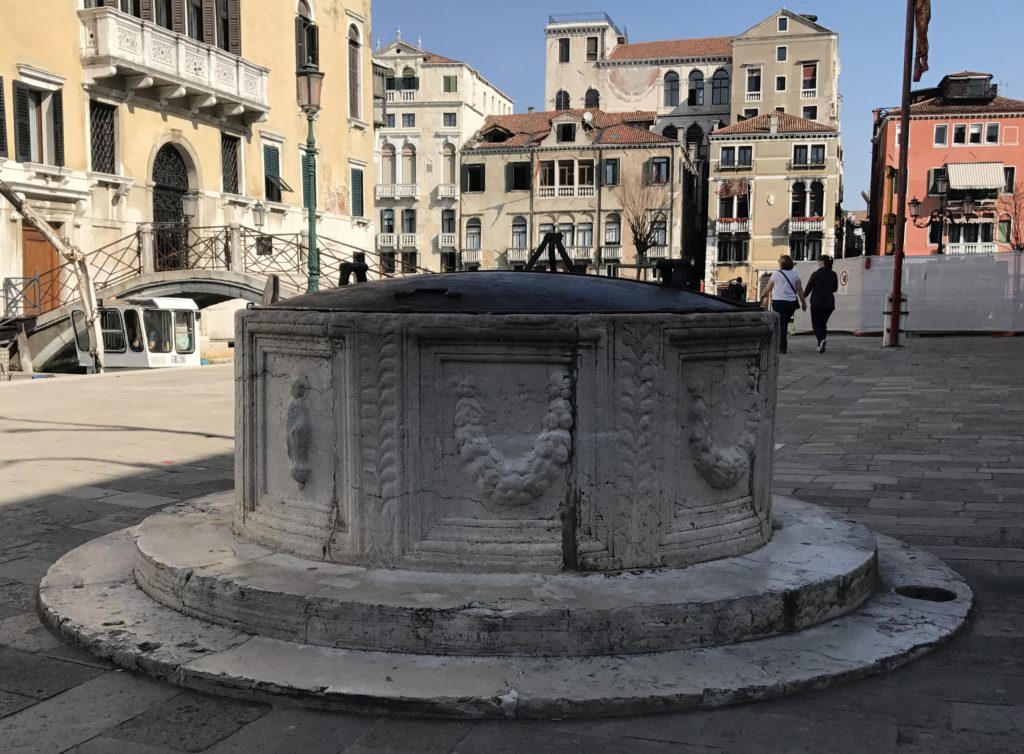
All campos have beautiful water fountains for the residents. It’s very convenient to carry a water bottle on city walks and refill as needed.
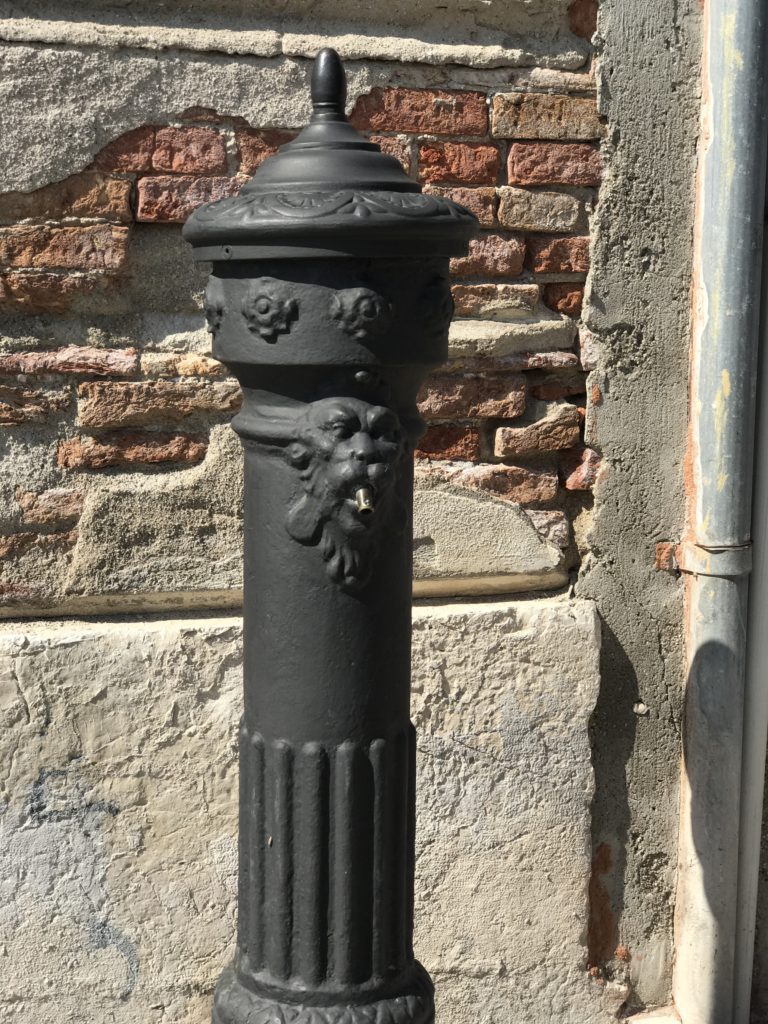
Palazzo Dario, a haunted house?
There is a legend about this gorgeous house, Palazzo Dario. Its said that all owners of the house die a tragic death, after losing all their wealth. However, its also said that none of them have died in this house or even while they owned the house. This fake legend has scared away many potential buyers like Woodie Allen. Now its owned by an American company that’s restoring it.
More importantly, this house is a masterpiece of Venetian gothic style.
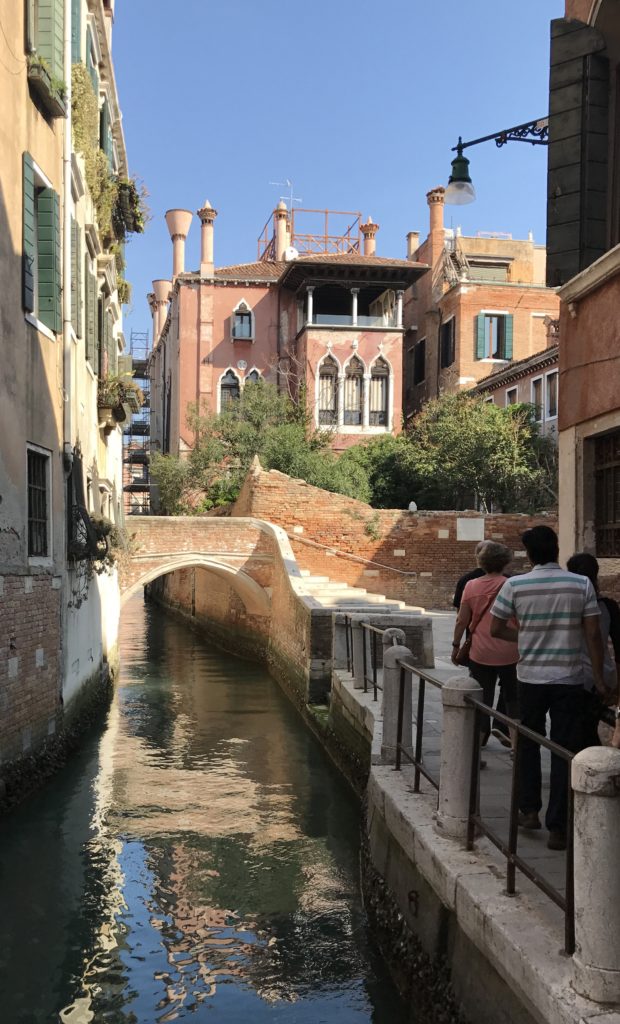
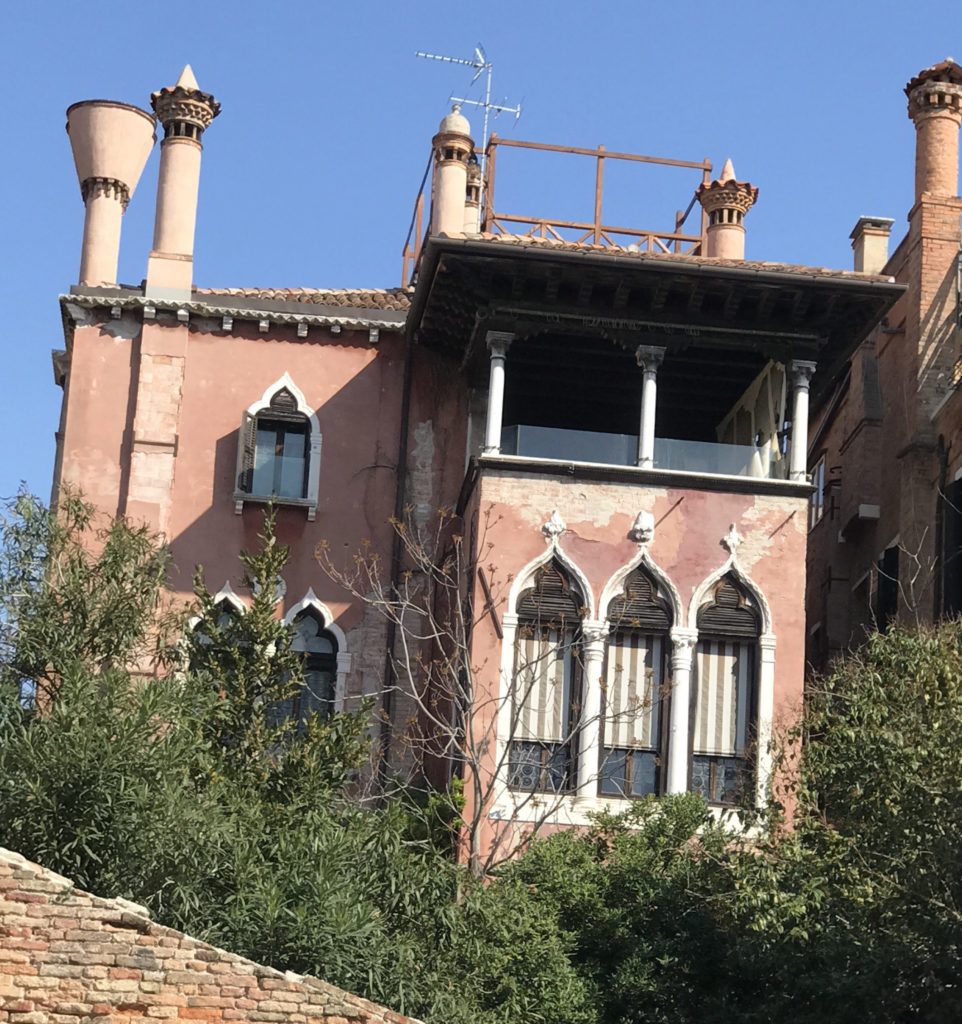
Basilica di Santa Maria Della Salute
Starting in the 1300s Venice was affected by a series of plagues. By the end of the last plague 1/3rd of the 250K population was wiped out.
Venice had a very open culture with many pleasures like drinking, gambling, prostitution etc. So, the priests explained that plague was God’s way of punishing the Venetians for their ways. So with each plague, Venetians constructed the beautiful church.
After the end of one such plague, they constructed the Santa Maria church, the largest and most extravagant church, at the entrance of the grand canal. Since then the plague hasn’t returned so it’s also called the church of Holy Mary of Health
This stone church’s weight needed a strong foundation. Since Basilica di Santa Maria Della Salute was built in one of the deepest parts of Venice, it needed a deep foundation. The foundation has 6 meters of tree trunks built from one a million trees and 12 meters of stone. It took an entire forest from Croatia and other mainland countries.
Venice is equated to Virgin Mary. Like the Virgin Mary, Venice is the queen of the sea and its built on virgin land. So the statue at the front entrance is that for Virgin Mary and the woman at the very top of the church represents Venice and has the halo on her head.
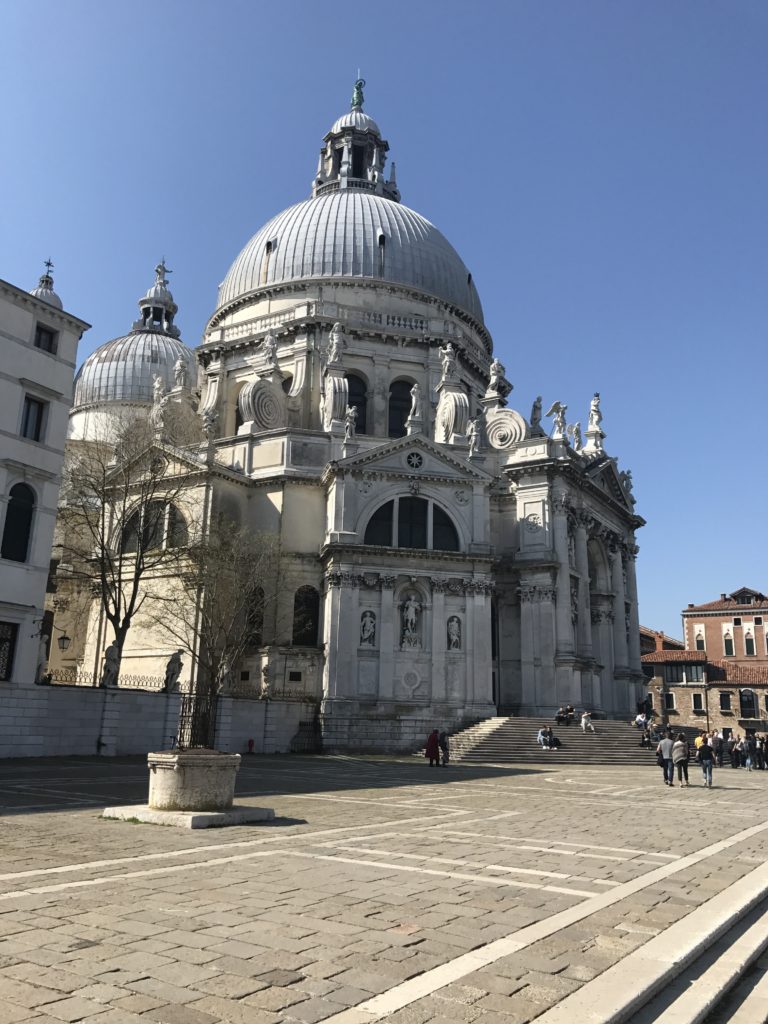

[themify_col grid=”2-1 first”]
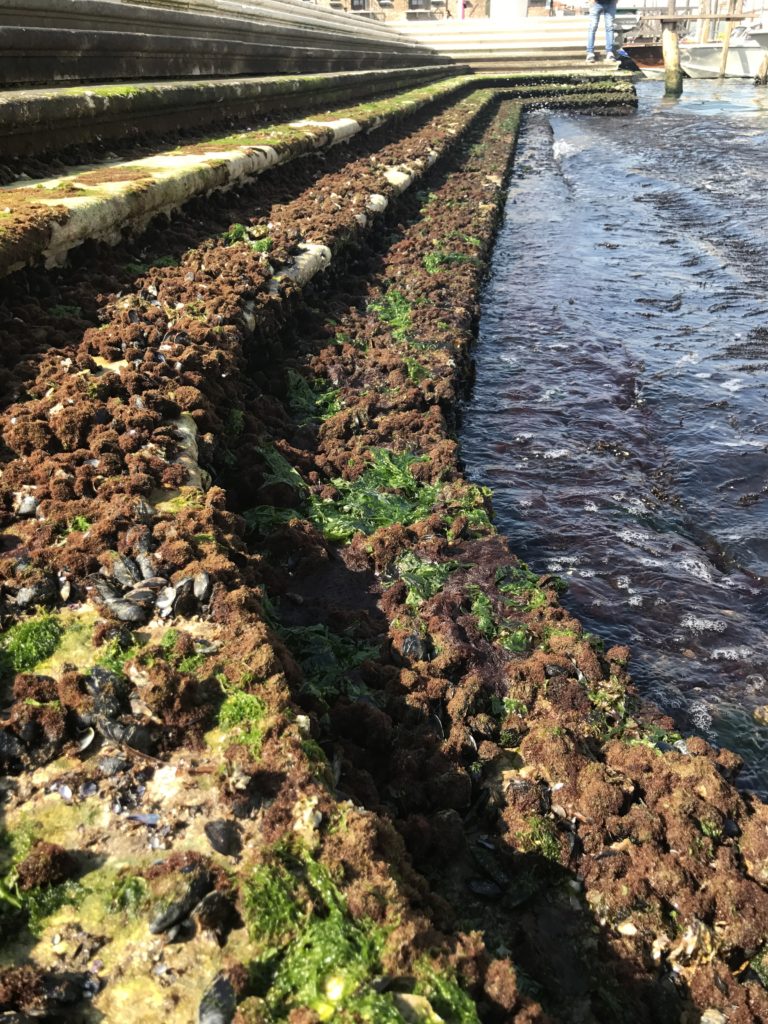
[/themify_col] [themify_col grid=”2-1″]
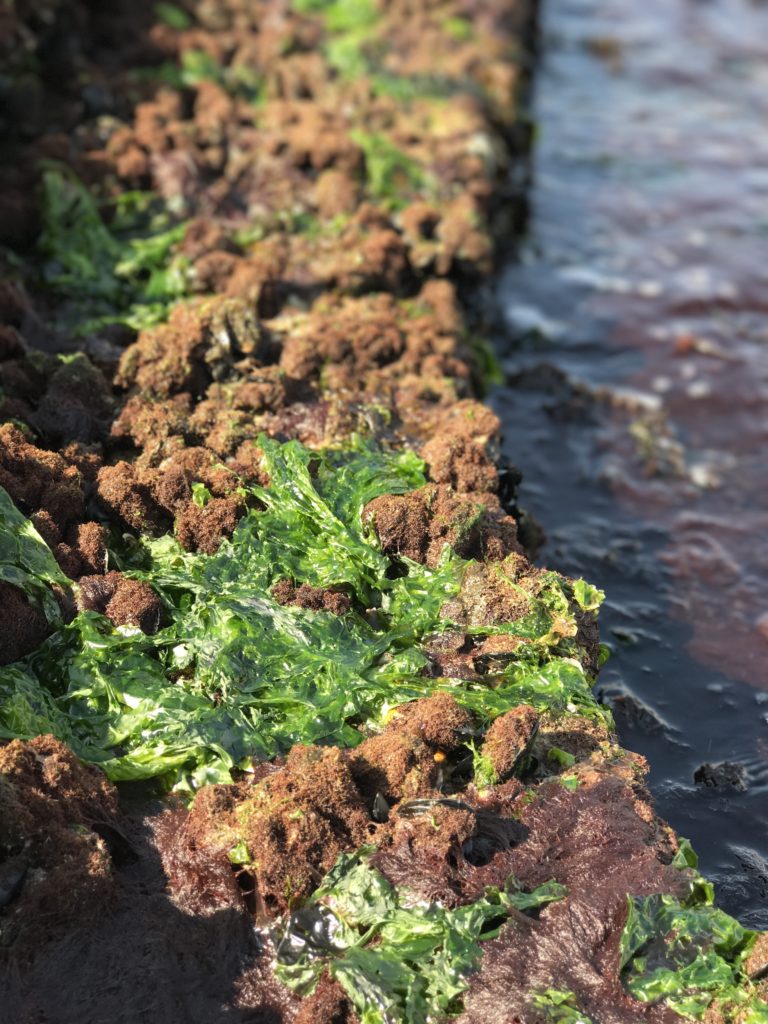
[/themify_col]
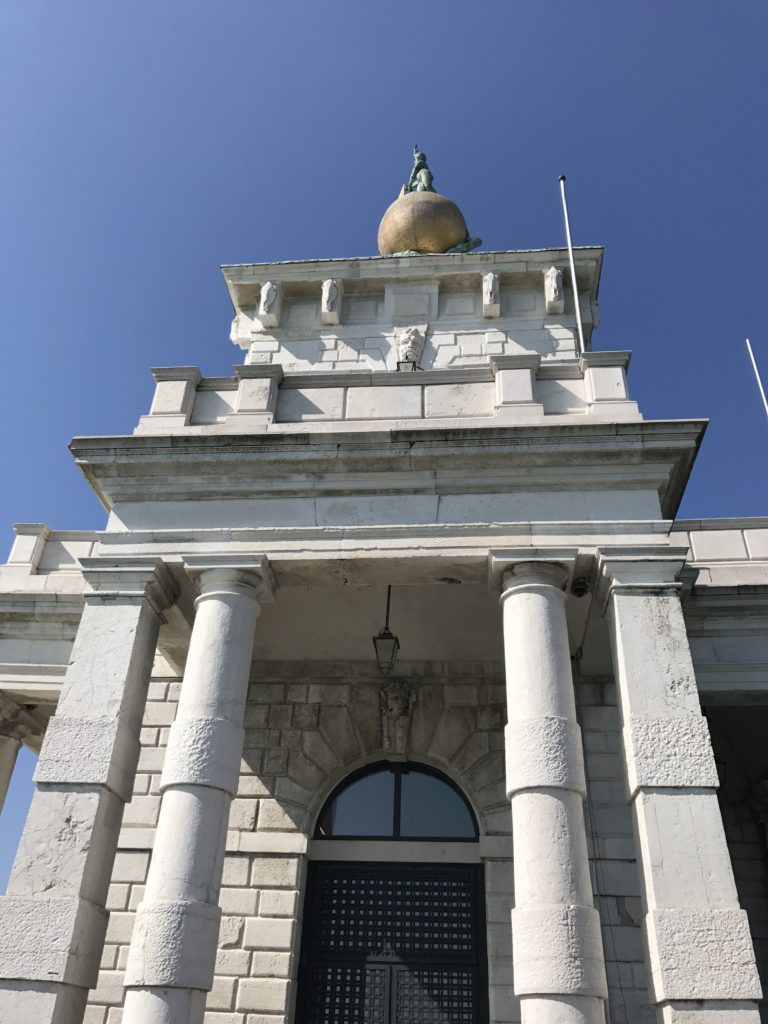
St George Island and the church is across from the San Marco square. The church is built in the classical Palladian architecture, which is now used in other iconic buildings like the White House. The St George’s church was built with the same white Istrian stone as the base of the buildings. The stones have holes all over the surface. At sunset, the light reflects from the inside of the stores and scatters as the rainbow. Over the course of the 30min of sunset, the St George’s church glows with changing colors – white, orange, red.
Also, one can go up the tower with a ticket for some great panoramic views of Venice.
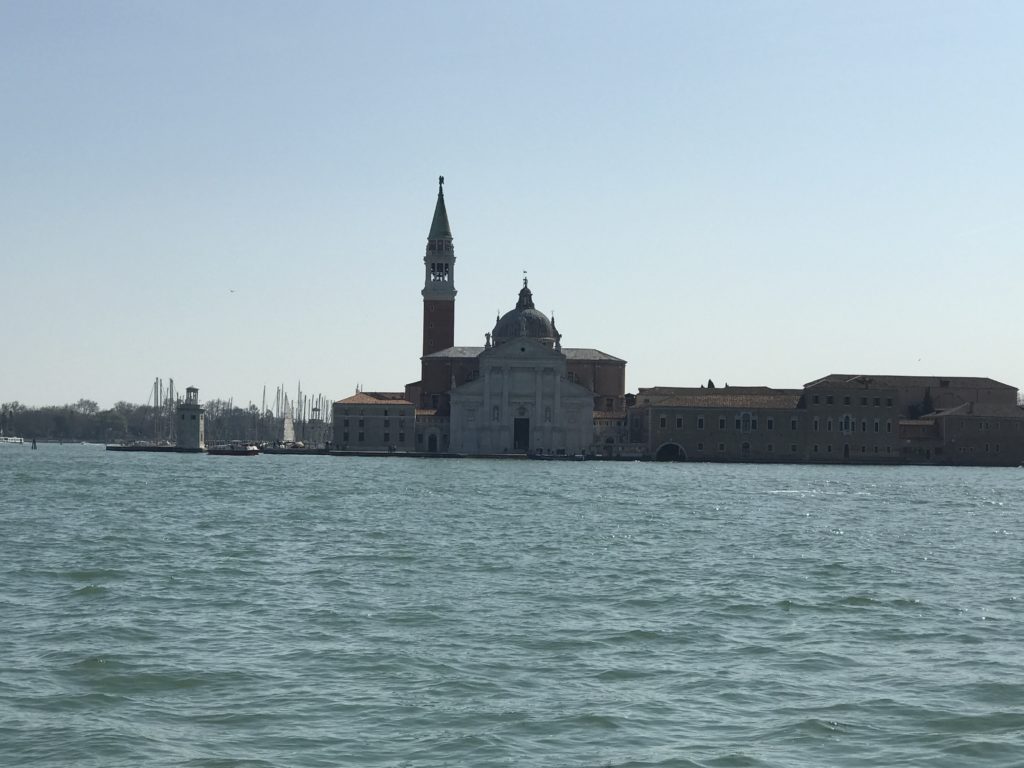
Festa del Redentore (festival of redemption)
On the third weekend of July, all of Venice comes together with the most amazing festival of the year. Starting with the end of the plague in 1576, it’s the oldest running celebration of Venice. For the festival, a bridge is built across this wide canal between Venice’s Grand canal entrance area and Basilica del Redentore. Venetians mark their spot along this church for weeks to set up a table. Everyone comes out with food and craft to share and celebrate. Like Jesus, people walk over water (the pantaloon bridge) . At night spectacular fireworks last an hour.
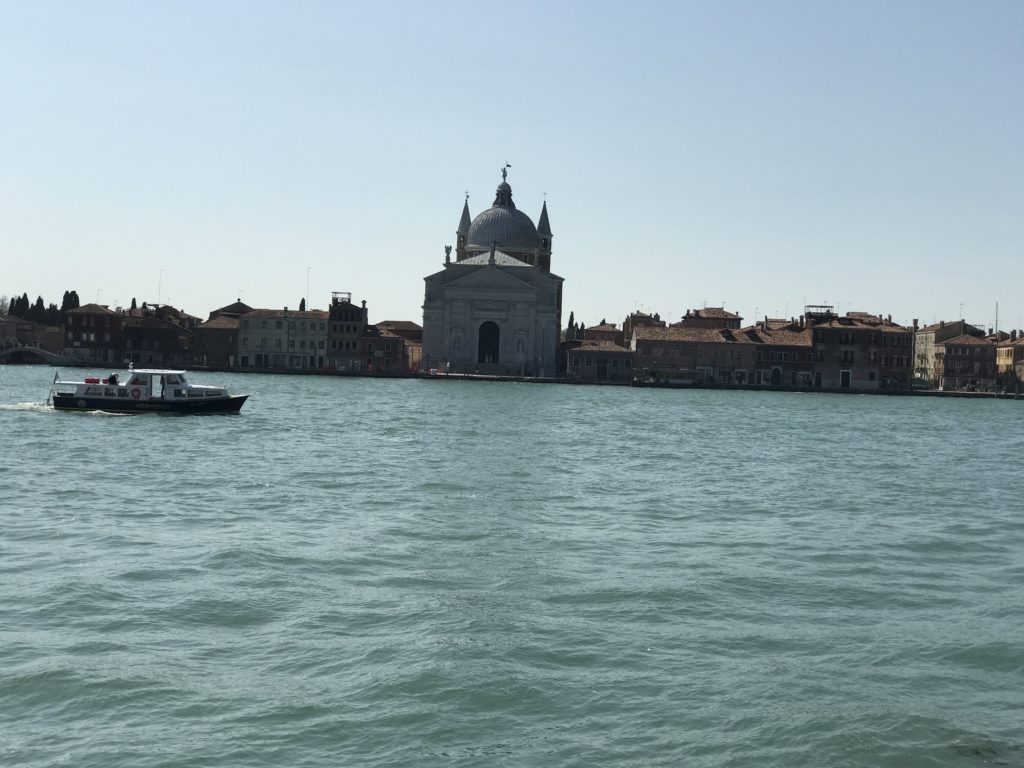
Canals
All the ~100 islands are separated by canals. Venice has no roads and no cars. The available modes of transportation in Venice are feet and boats. Canals are the roads and expressways of Venice. Over the canals are bridges for people to cross over. There are 400 bridges in Venice.
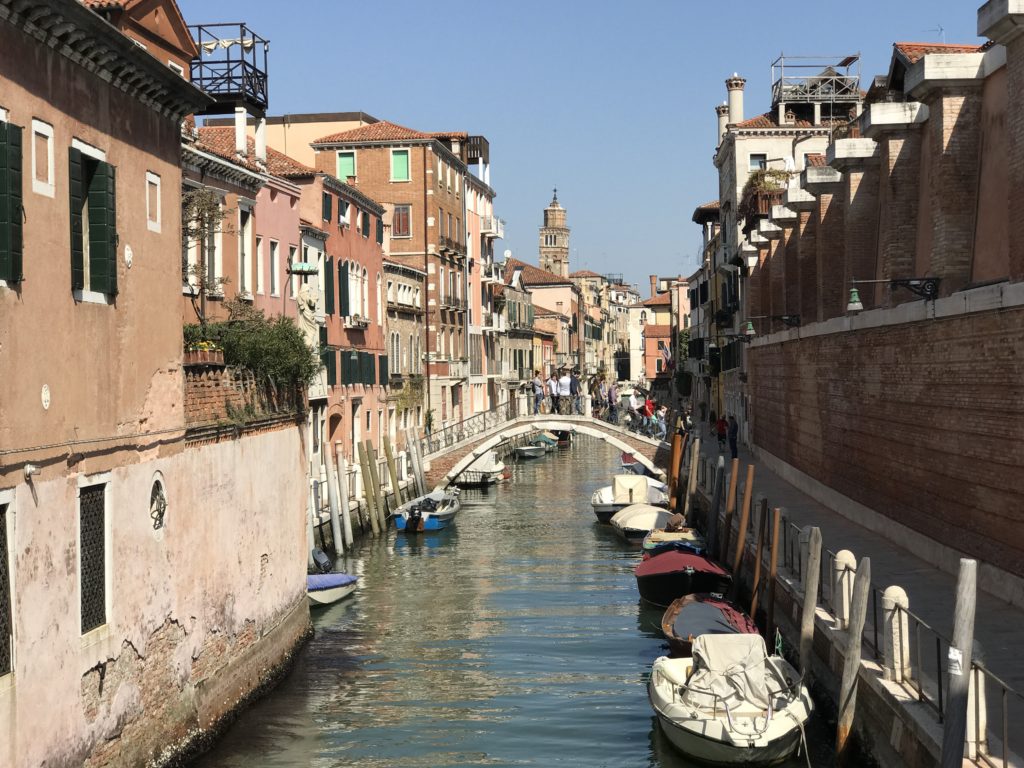
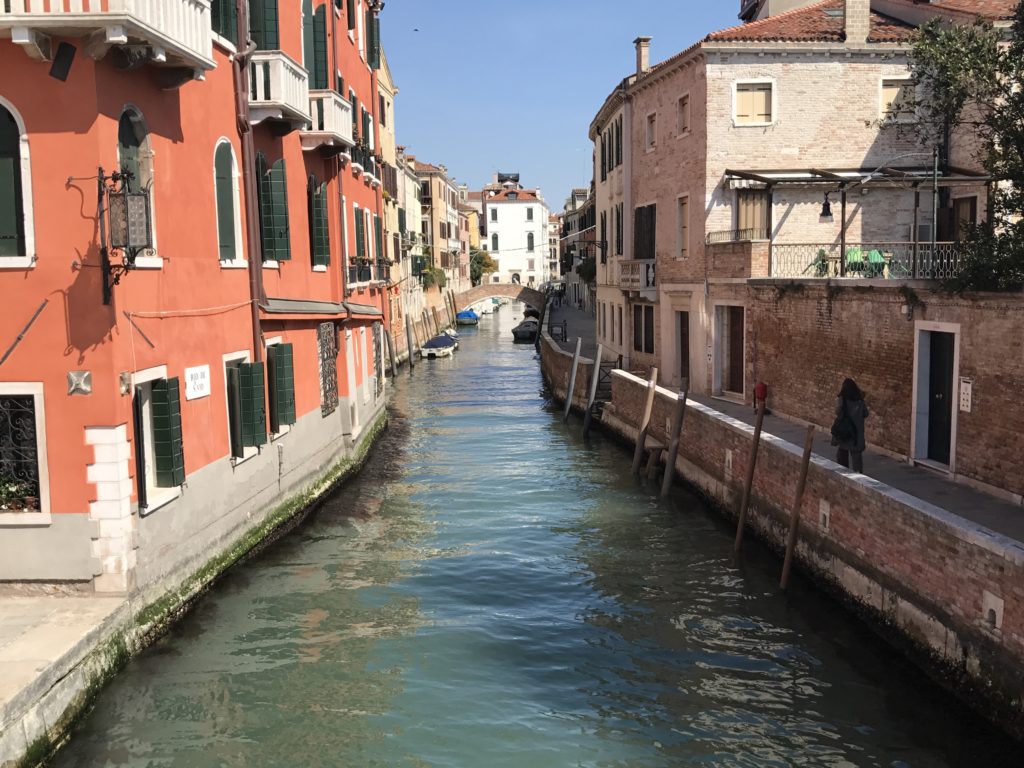
When Napoleon came he filled some of the canals to create more walkable paths for the residents. So the 118 canals reduced to 98.
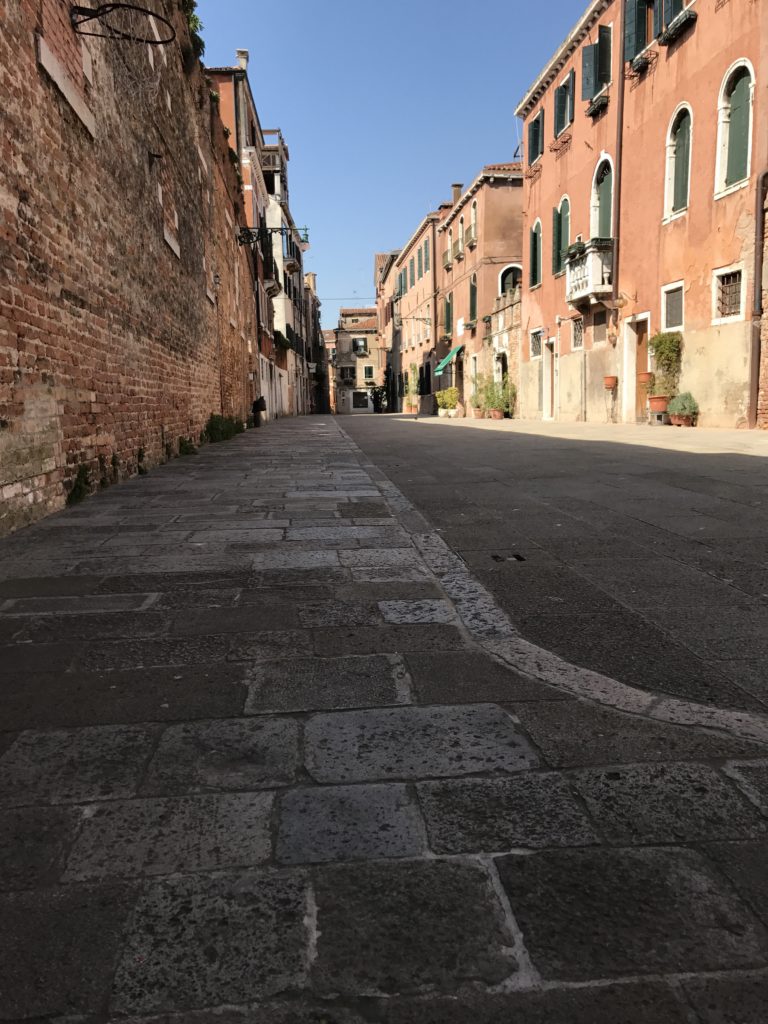
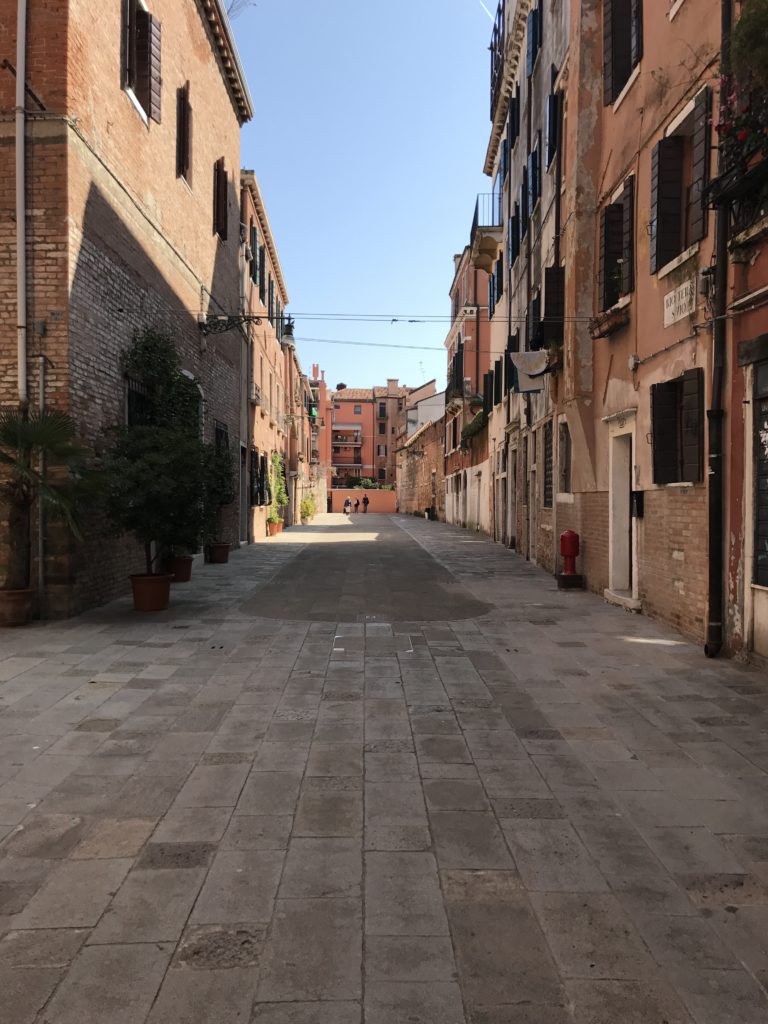
Ca’Rezzonica Palace and Museum
The Ca’Rezzonica Palace is a good example of a Venetian home and lifestyle in the 1700s
Ground floor including the gardens is open to all. The two noble floors are accessible with a museum ticket. One of the specialties of this museum is that the two floors of a section are converted to a ballroom with high ceilings. The exotic ballroom painted by Tintoretto and the Murano glass chandelier is worth checking out.
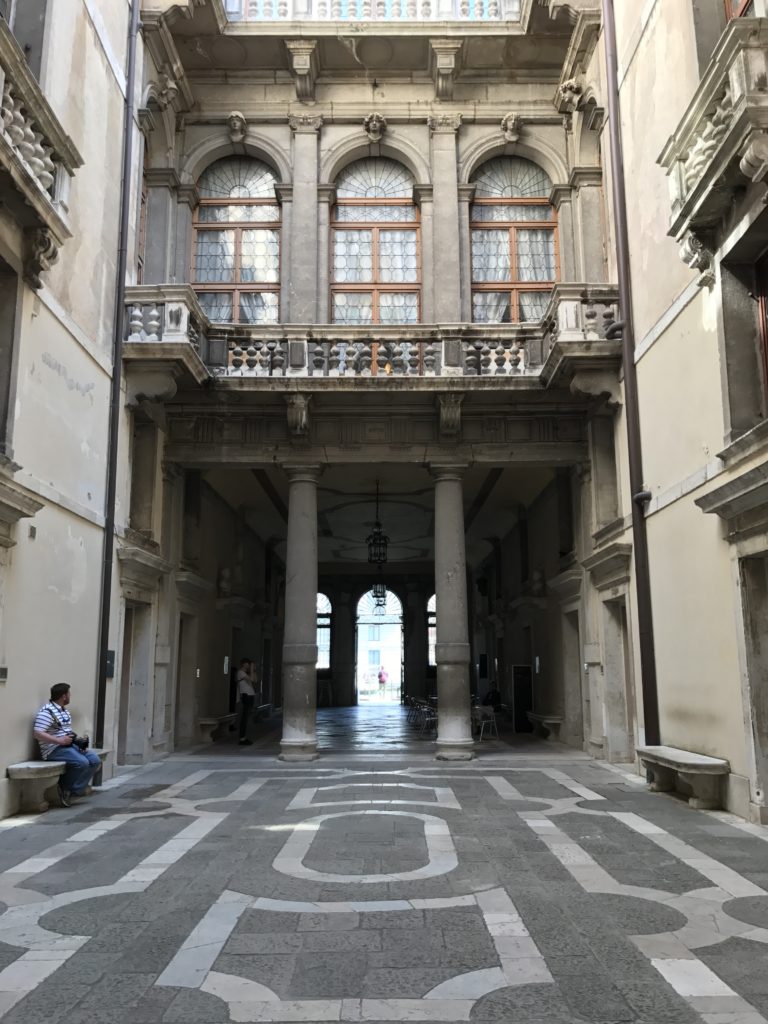
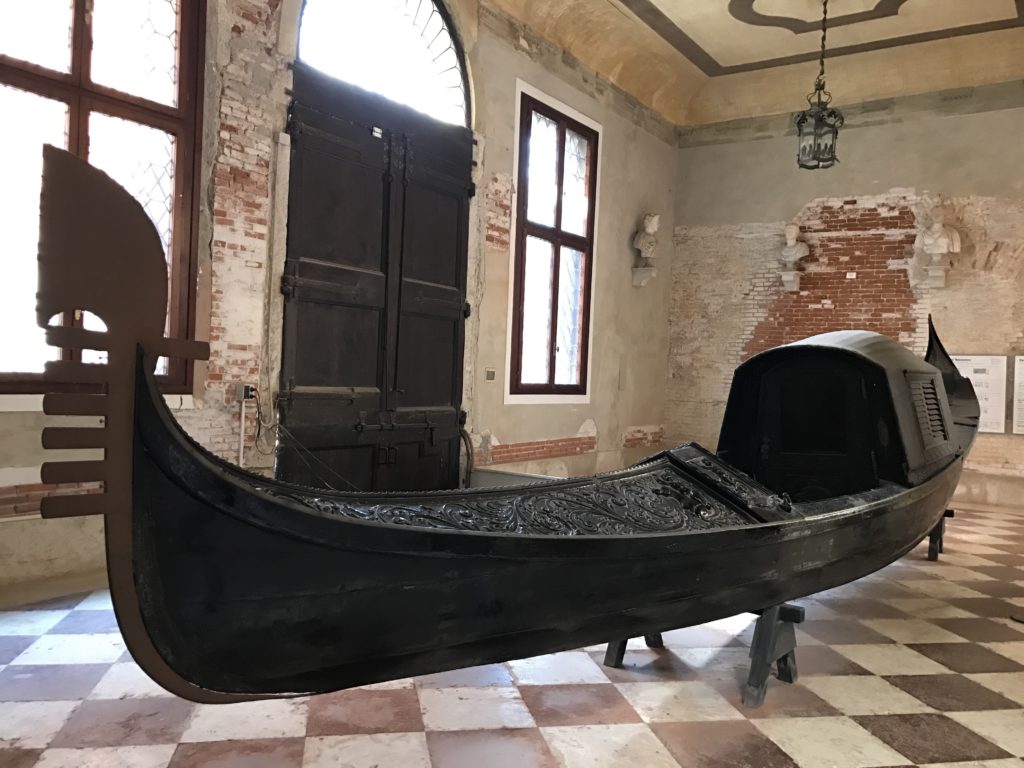
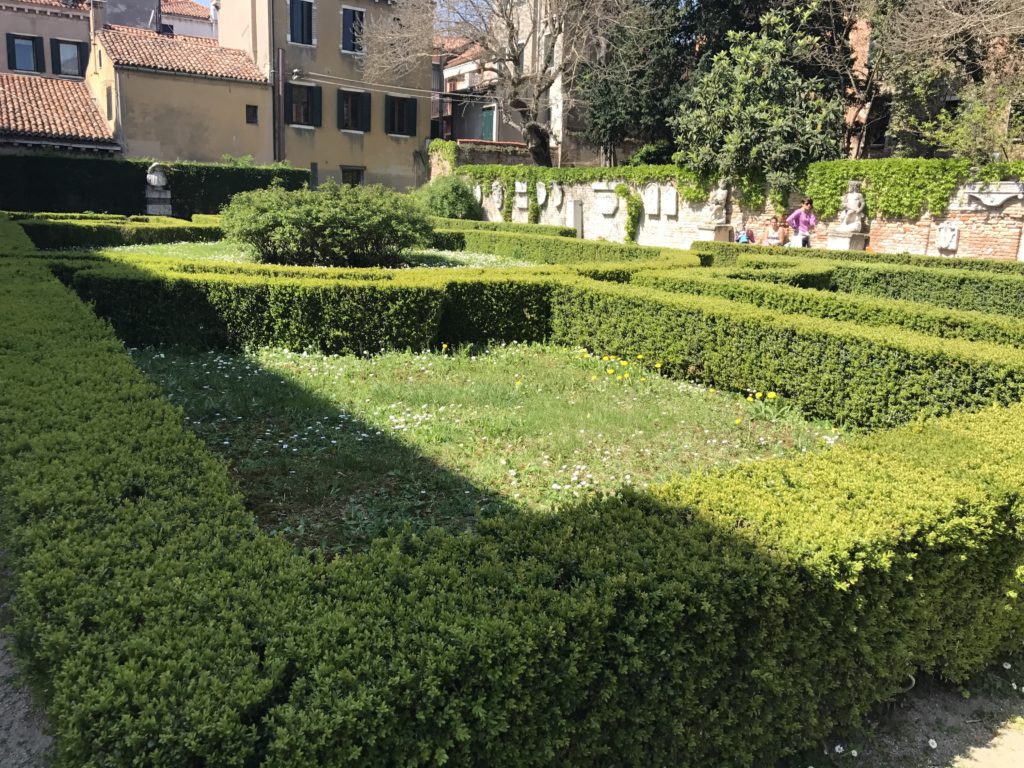

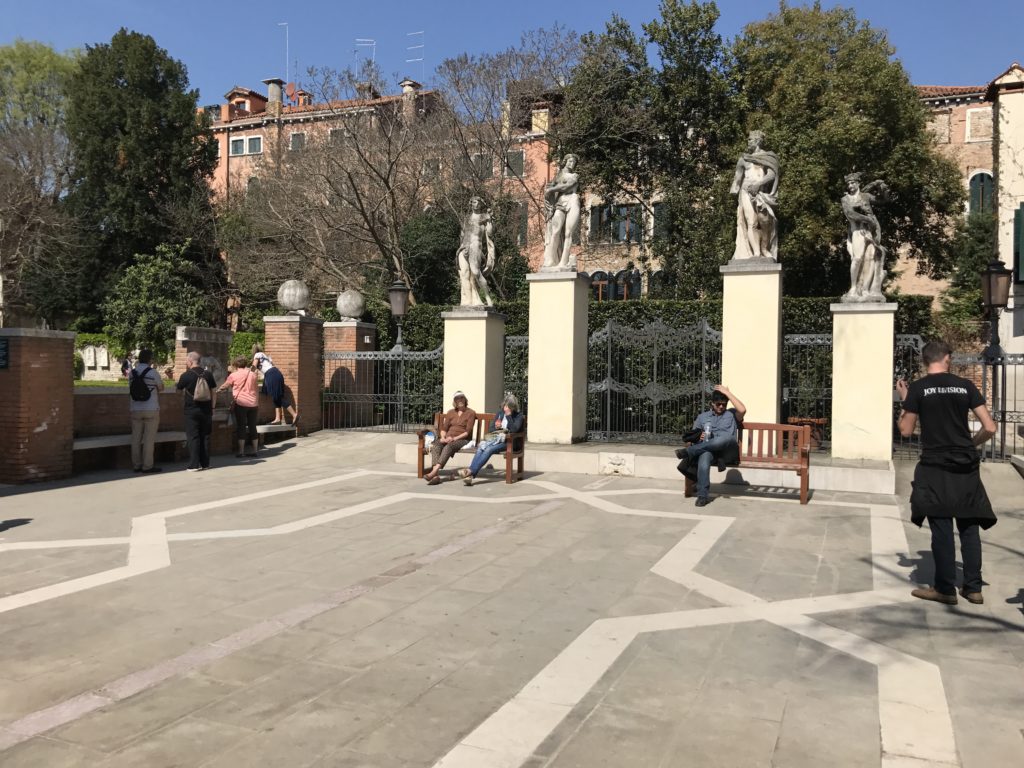
Squaro Boat yards in Venice
Back in the day all the transportation was using boats. Gondolas were the main means of transportation for the many nobles of Venice. Squaro boat yards made the gondolas then and still do.
By the 16th century nobles used to showoff their status with the fanciest gondola. The competition became so furious that the sumptuary law was enacted to ensure all gondolas are the same black color, thus taking aways the wastefulness. The law still stands and all gondolas are black.
The unique dark wooden structure to the right of the boats is the boat makers house. Such houses are only found by the square boatyards.
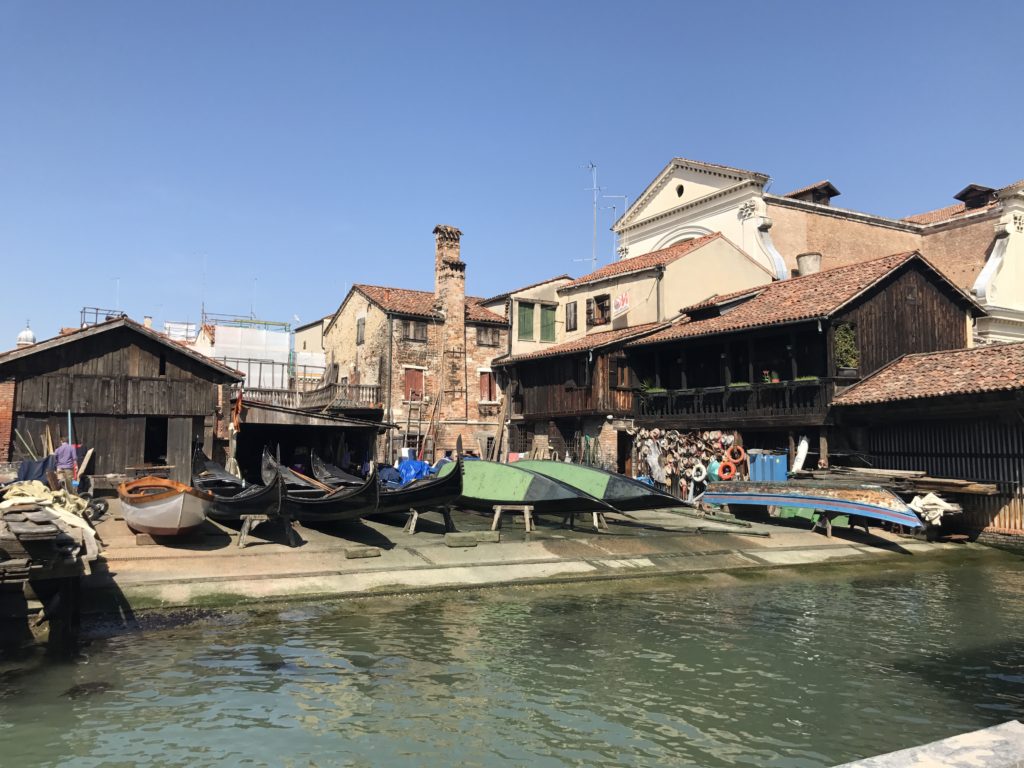
More about boat making tours is here.
Gondolas
The gondolas are perfect for these narrow and at times very shallow canals because of their narrow bodies and flat bottoms. Also, they are asymmetric to support the one-ore driving in the narrow canals of Venice.
Making a gondola is an art. Each gondola is made of hundreds of parts and it takes craftsmen 7-8 months to make. A gondola costs €40-50K. To become a gondola driver, one must train for 3 years and then obtain a license. Hence its not surprising that a gondola ride for 30min costs €80 (€100 after 7pm) for upto six passengers.
When taking a gondola ride the starting location is key. Take a ride from one of the hubs like San Marco square only if you want to experience lines, gondola traffic jams and to travel a short distance is busy canals. To take a ride in narrow and quite canals start the ride at Campo S Maria Formosa.
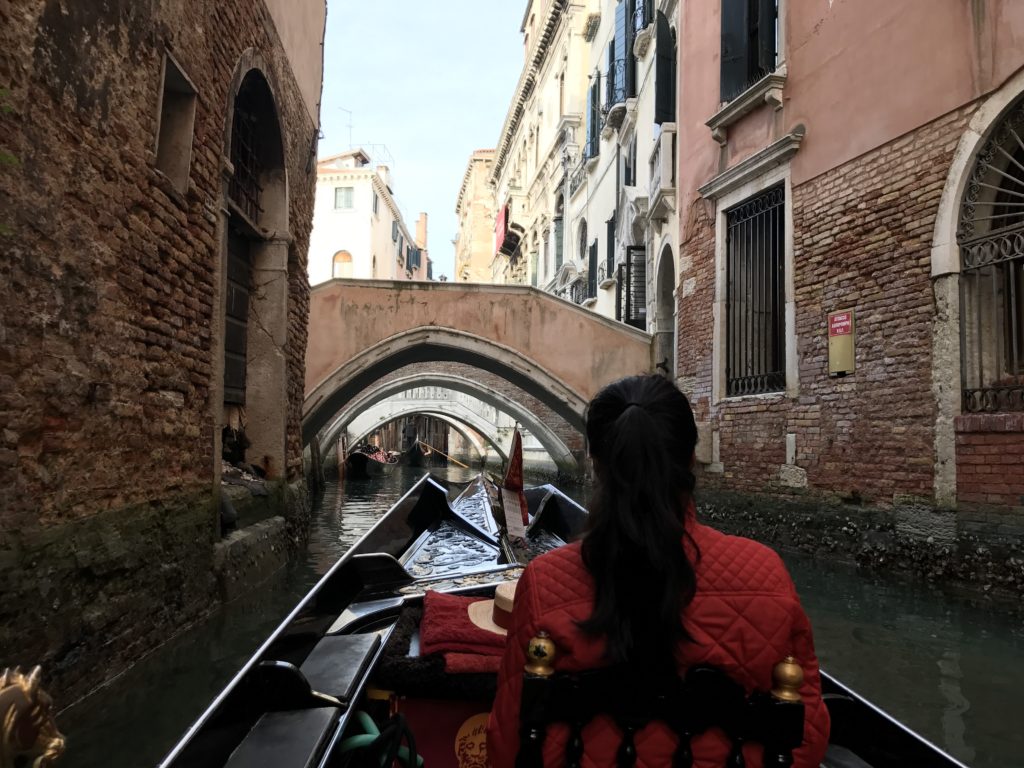
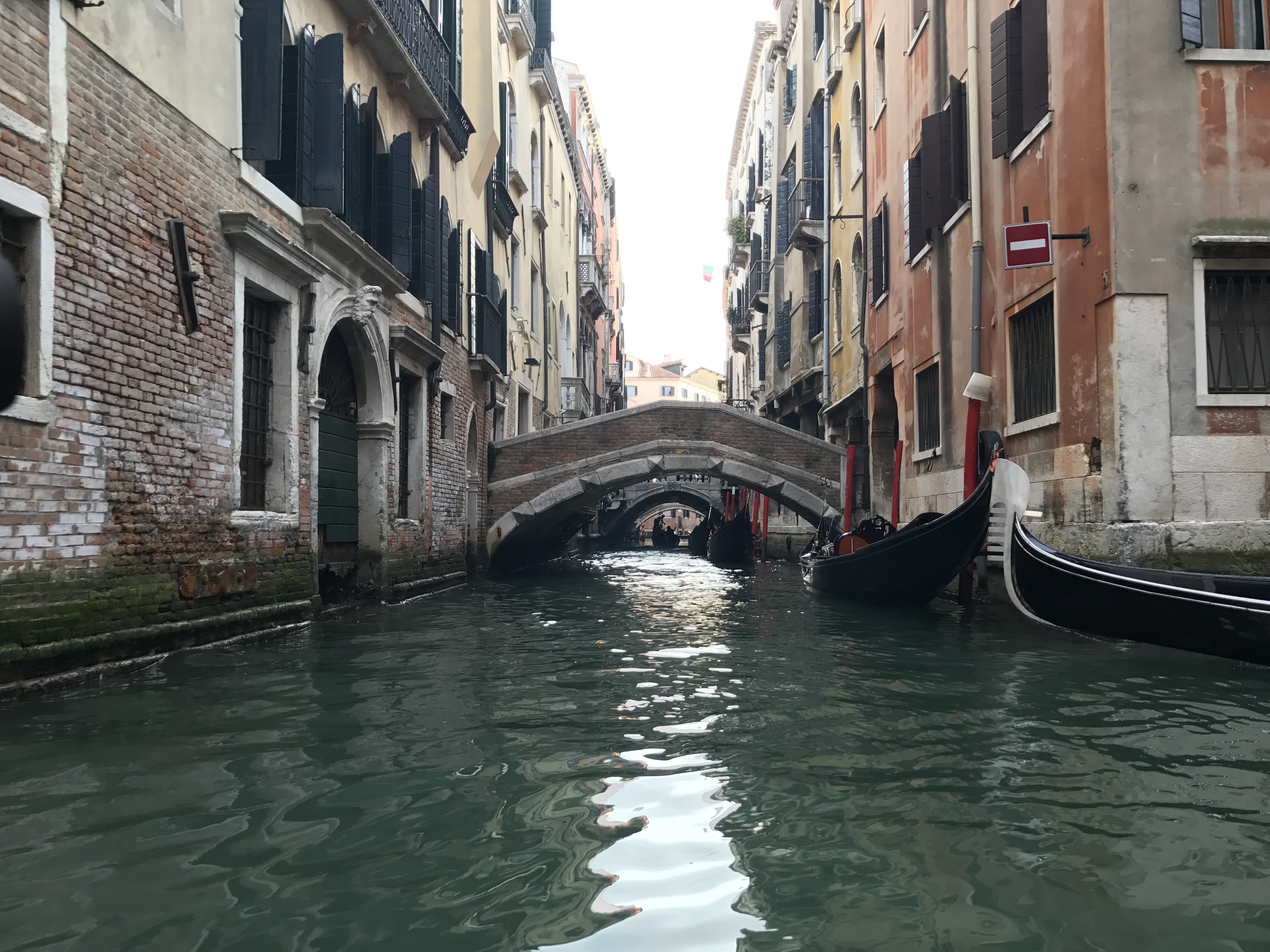
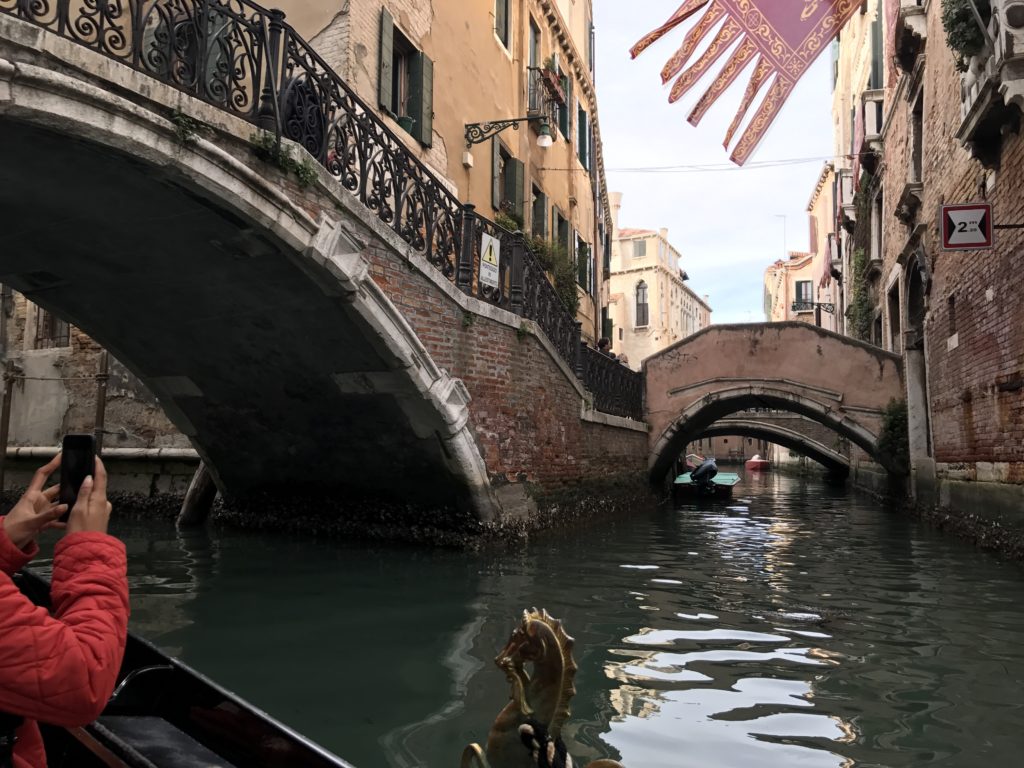
For a cheap thrill get a ferry gondola $2 for a minute across a canal. You’ll have to stand and balance on the gondola for a whole minute.
A surprise inside Saint Pantaleone church (aka San Pantalon)
Although Pantalon stands for Pants, this is not the church of San Pants. Its actually the unbelievably church of Saint Pantaleone, abbreviated for convenience.
This church trust left out the exterior, probably because they ran out of money due to financial hardship or lack of donors. Usually a marble exterior is hung on to the front using the big holes in the bricks.
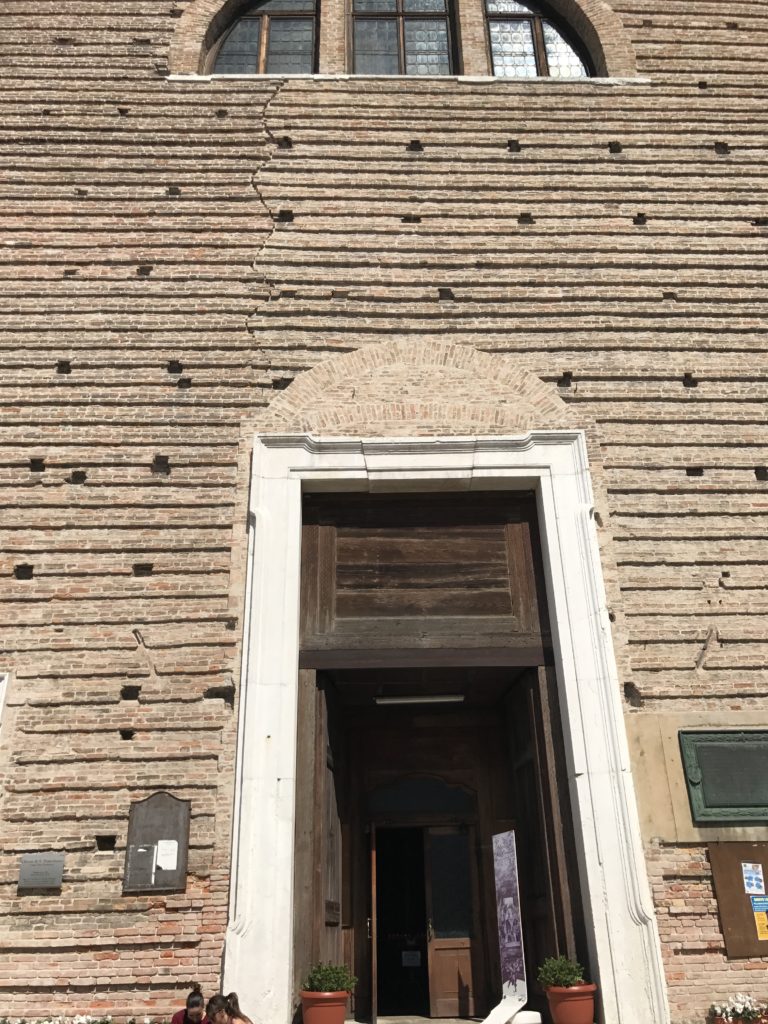
Or they ran out of money because they spent it all on the interior!
Its one of the only free entry churches in Venice and a definite must see. Gian Antonio Fumiani spend 25 years of his life(1680 and 1704), lying up on this church ceiling, painting this masterpiece. When it was nearly complete, fell from the scaffolding to his death, or he would have been one of the most famous painters. It’s the largest and most stunning canvas painting and a well kept secret from tourists, so you’ll see only the rare tourist in this functioning Venetian church.
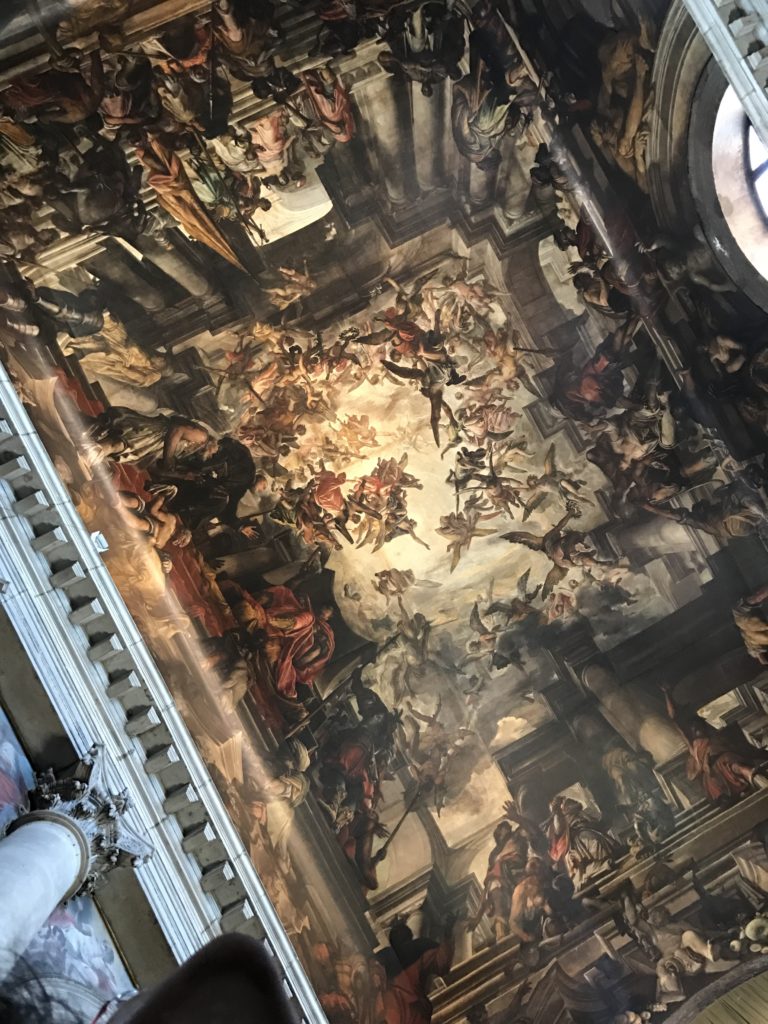

If you’re looking for work of an artist in Venice, you can check the plaque outside the church, before entering the church.
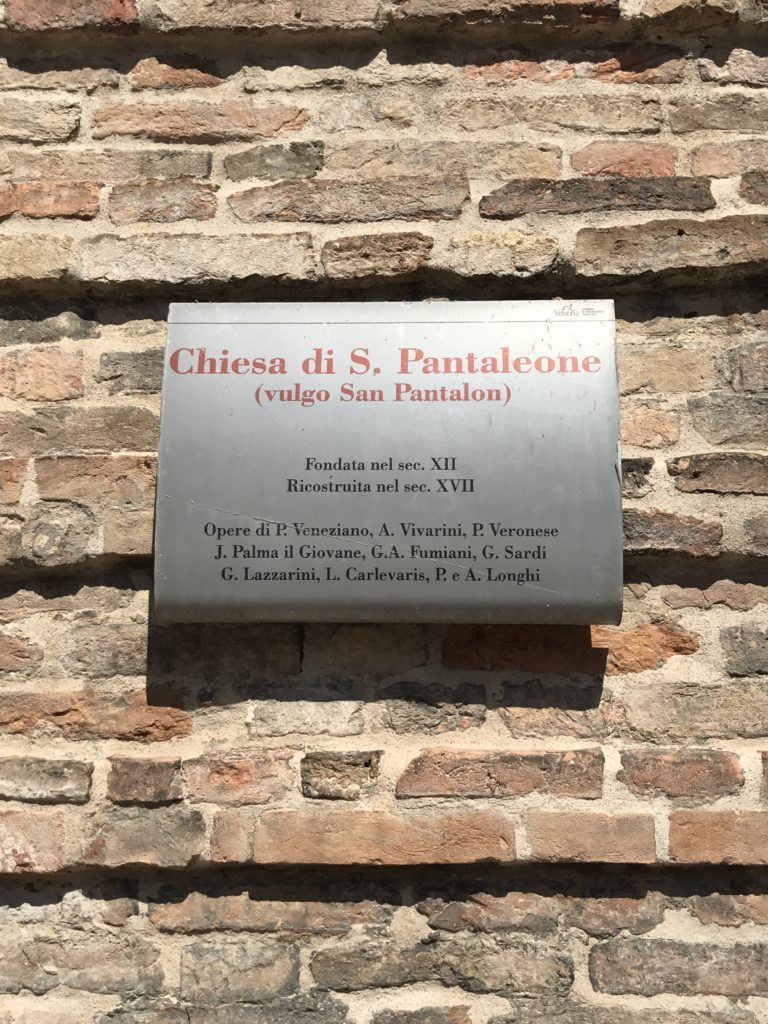
Narrow alleys of Venice
Venice is a maze of canals and alleys, if there are 400 canals, that must be just as many paths, There are a few broad streets but most of them a re very narrow alleys. Must of the heart of the city (and its locals) is in these narrow alleys.

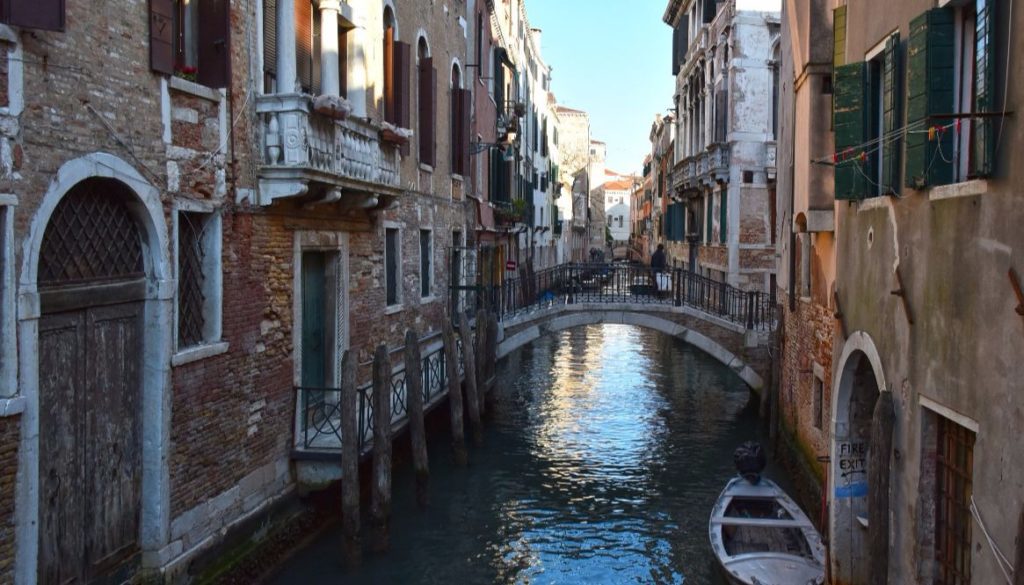
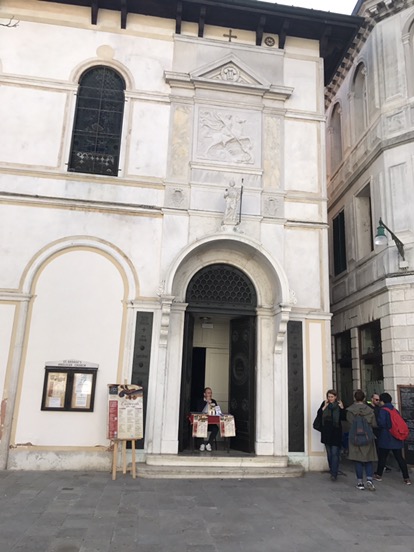
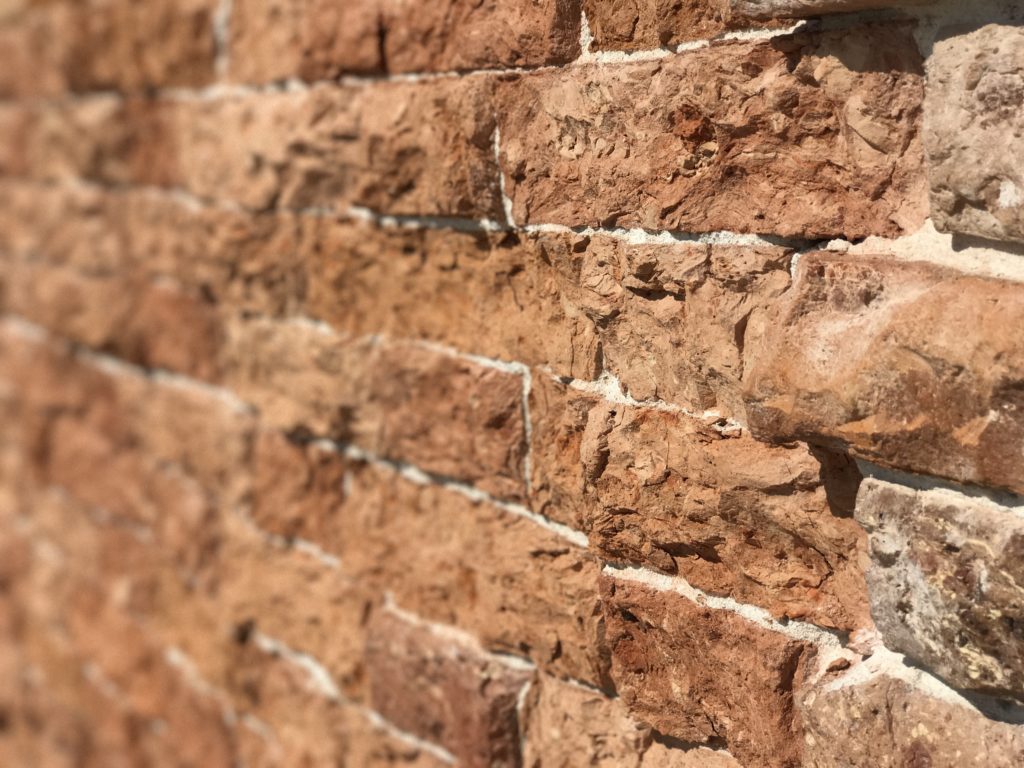
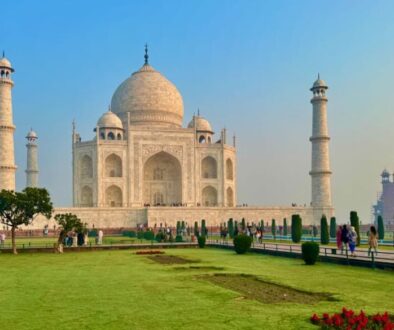
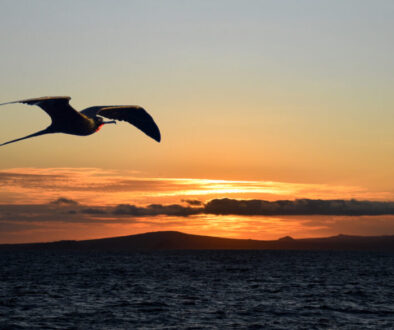


Tania M
March 13, 2019 @ 4:30 am
I love Venice, been a couple of times. Great post and nice photos.
Jyoti
March 13, 2019 @ 9:58 pm
I can totally relate! I’d love to go again to Venice and visit during their annual festival. It’s really cold during the festival but I think the holiday cheer will make up for the windchill in Venice.